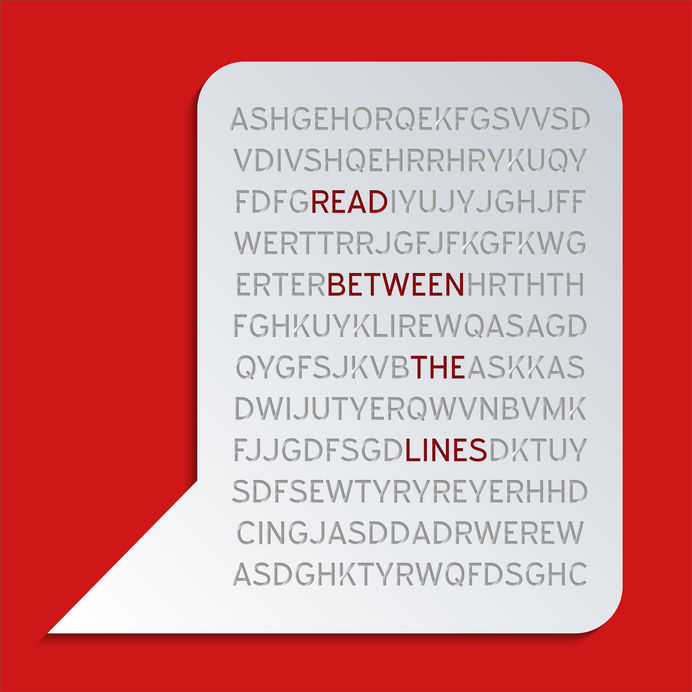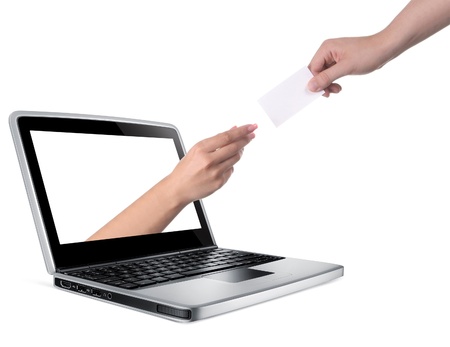Reading Between the Lines of
Written Communications

“Reading between the lines” is necessary in business and social life. Having this ability helps you discern what others intend or want when they aren’t directly expressing a request.
Though we may read between the lines of verbal communication, the phrase applies to written communications. Email is the most popular form of communication in business with the total number of email users growing by 3% each year. And with fewer in-person meetings, classes, and social gatherings taking place, email and messaging apps are currently being used more than ever.
This is why our ability to quickly read, comprehend, and respond in writing is very important. It also requires us to read between the lines more than ever.
The Importance of Clarity
The majority of the responsibility for conveying a clear message rests on the shoulders of the person writing it. As with any skill, the more you practice, the better you become.
Writing – or typing, as it were – is affected by speed. The faster we do it, the greater chance for typos, skipped words, and missing or misplaced punctuation. And an autocorrect feature, while well-intended, can sometimes sneak in an irrelevant word or phrase.
You have a better chance of reducing the necessity for reading between the lines when you:
- Focus on the message you are writing.
- Type at a comfortable, rather than speedy, pace.
- Proofread your message twice – once for clarity and once to check for spelling and grammar errors.
- You might also read your message aloud to further check how it might be perceived by the recipient.
Reading vs. Reading Between the Lines
We all know a clear message when we read one. The process is incredibly easy: read words, understand, accept information or take necessary action.
Seamless, right?
But when a message isn’t so clear, we stop. Re-read. Think about what the person is trying to say. Read again. Hope that our response is correct or acceptable. There is much more time and effort required to decipher unclear communication.
Putting etiquette skills to work helps us grow in discovering what’s between the lines such as unexpressed emotion, intentions, needs — or perhaps messages that aren’t immediately obvious, which we’d never want to overlook.
How to read between the lines:
- Imagine the body language that a person on email is conveying. Are they standing up straight? Are they hunched over and worried? What facial expression do you imagine?
- Does the person emailing you seem invested in what he is saying?
- If it is a business email, is the person getting beyond sales talk? Do you feel that they truly care about your needs, or just want to make a sale?
- If there has been a back and forth stream, does the person have a good memory for what you’ve already said, or is there confusion and a sense that she is not hearing you?
- Do you feel greeted? Has the person signed off in a kind manner?
- Do you feel as if you are in a right conversation for the occasion of the email?
Considering the questions above can help you determine the purpose, intention, and emotional state of the person writing to you. This information can help you determine how you should perceive the message and what action or response the sender may be hoping for.
However, if you need more clarity, ask for it. For instance, the person you are communicating with mentions meeting for lunch, but you aren’t sure if she is sincere. You might respond with: “When you said that you wanted to meet up for lunch sometime, I’d like to do that. What times or dates are good for you?”
If she is being genuine, you’ll receive a response with dates and times. Otherwise, you know where you stand with this person.
Reading between the lines has various levels of complication depending on the subject and clarity of communication. It’s always best to default to the etiquette-ful “What’s it like to be on the other side of me?” when seeking to understand a message. A little empathy can go a long way.
And when all else fails, you can always place a phone call or request a video conference.














